Materials for finishing stoves and fireplaces: plaster, putty, paint
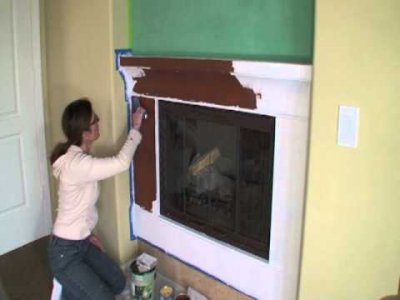
The finishing of a heating stove or fireplace with various materials has both designer the goal is to improve the appearance of the device, and technical – improving the thermal conductivity characteristics of the device.
Many types of materials are used for finishing or cladding, but all of them must meet certain requirements: resistance to high temperatures; high thermal conductivity; strength and resistance to mechanical damage; pleasant appearance.
Content
What can be used to decorate and cover stoves and fireplaces in a house?
Due to the high requirements for the strength of the finish, the layer thickness must be not less than 6-8 mm, and the material itself must be dense, low porosity. These parameters correspond to a number of materials that are today the main ones when choosing the type of finishing:
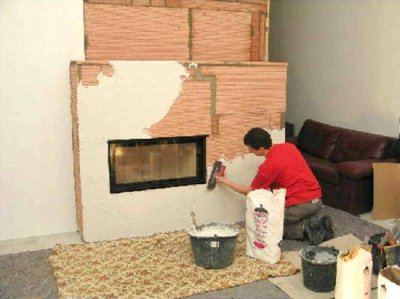
- plaster;
- painting;
- natural stone;
- facing tiles;
- tiles;
- finishing brick.
The most common materials due to their availability and speed of work are plastering and painting the stove. To level the masonry, it is recommended to use heat-resistant putty, which can also be used as an independent finishing material.
Sometimes stoves are covered with galvanized steel, but this is not recommended, since the stove heats up to significant temperatures during use, and metal conducts heat well. Because of this, you can easily get burns.
Decorative heat-resistant plaster. How to make it yourself?
In order to hide unevenness, to prepare the surface for painting, plaster is used. Its decorative varieties can be used as an independent finish.
Carefully! The peculiarity of plaster for fireplaces and stoves is its constant exposure to heat. This excludes the possibility of using ordinary cement mortar - under the influence of heat, cement expands and cracks, and also releases toxic substances.
For plastering heating devices it is preferable use the following solutions:
- based on clay and lime;
- based on clay and sandstone;
- based on lime and gypsum.
Clay is the most popular material for making mortar due to its high thermal conductivity. To create clay-based plaster, mix clay soaked in water with sand in a ratio of 1:2. The composition should be of medium thickness in consistency, mix well, but be plastic. To improve the properties of the solution, add asbestos, lime, in some cases the addition is allowed cement.
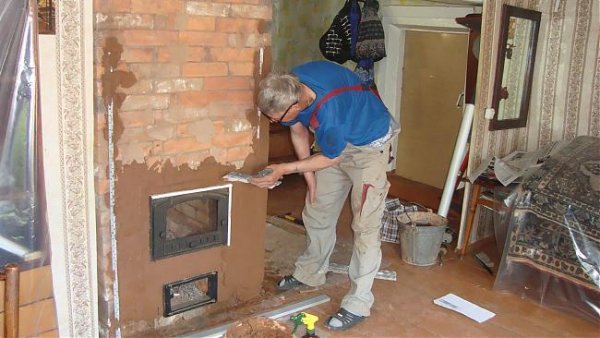
Photo 1. The process of plastering a brick oven using clay mortar. You can make it yourself.
To quickly check the quality and plasticity of the mixture, a rope with a diameter of 1-2 cm, after which they wind it onto a suitable stick (diameter about 5 cm). If the tourniquet does not break, if it can be pulled out a little, the consistency of the solution is good. You can mold small balls or cakes and dry them in the sun or with a heating device - a correctly mixed solution will not crack.
Well-known manufacturers of plaster mixes
The modern market offers a variety of varieties ready-made dry mixes for plastering stoves:
- "Terracotta"The mixture consists of dry clay, fireclay dust, and binding elements. It is characterized by plasticity and strength, and retains its properties when heated. up to 200 degrees, environmentally friendly.
- "Plitonite". Contains an additive in the form of strength-enhancing fibers, withstands heating temperatures up to 400 degrees, suitable for preparation for painting, for finishing.
- "The Stove-Maker". In addition to clay, the composition includes lime and asbestos, gypsum, mineral additives. The mixture is distinguished by its elasticity and amazing strength after drying, this plaster retains its properties even at temperatures up to 600 degreesIts disadvantage is that it contains additives that cannot be called environmentally friendly.
Using ready-made mixtures allows you to save a lot of time on work and get a high-quality result.
Fireproof putty
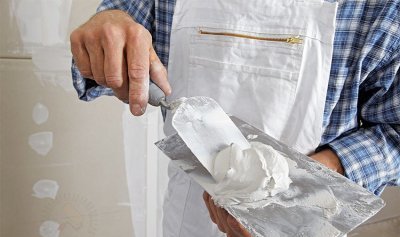
If the surface of the device has noticeable unevenness, and brickwork was used during construction, it is better to level it with heat-resistant putty.
The material is used for processing most highly heated surfaces: near the stove door, chimney, sometimes used for interior decoration of the firebox.
Requirements for putty mixtures: high resistance to heating, cracking, greater elasticity than plaster mixtures.
Reference. To avoid cracking, experts advise heating the stove shortly before work - so that the stove walls are warm. The surface should be evenly moistened before applying the solution.
The solutions are made on the basis of clay and lime with gypsum, often adding connecting elements based on polymers. The consistency of the putty should be thick, but at the same time spread evenly on the surface. To check the quality, it is recommended to roll a ball from the solution, and then squeeze it between two boards - if cracks appear, the solution is not elastic enough.
Well-known manufacturers
The most popular are the following companies:
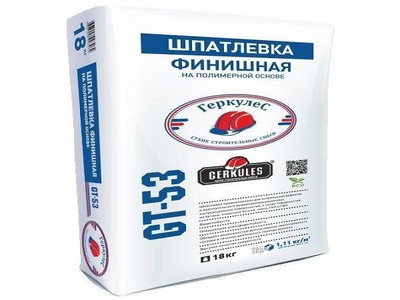
- "Plitonite" presents various options of fire-resistant putties, for example, the composition "Fireproof" based on fireclay clay, which can be used for filling the inside of the firebox (withstands heat) up to 1200 degrees).
- Mastic "Titan". Withstands temperatures up to 1300 degrees thanks to the composition based on stone flour, liquid glass, and polymer additives. Can be used for interior decoration.
- "Thermal masonry". It is used for outdoor work, areas that are heated are treated. up to 400 degrees.
- "Hercules". Has the properties of glue, composition based on cement with mineral and polymer additives. It is characterized by high adhesion, withstands heating up to 1200 degrees.
Experts advise using ready-made heat-resistant putties, since it is quite difficult to create a high-quality mixture on your own.
Choosing a Heat Resistant Paint
Heat-resistant paint can be applied to both metal or brick surfaces and to a preparatory layer of putty or plaster. Using paint protects the surface from corrosion and helps to give the equipment aesthetic appearance. The paint for the stove must be elastic enough not to crack when heated and cooled, there should be no changes in color, fading, or discoloration due to high temperatures.
Important! Paints for stoves cannot be made on the basis of oils, which release toxic substances when heated, so mixtures are made on the basis of acrylic, epoxy, silicone.
The paint consistency should be uniform and applied evenly. Sometimes spray paints are used. sprayers and ready aerosols — in this case, the consistency of the composition is more liquid (for example, this is how heat-resistant enamel is applied).
Famous manufacturers of thermal paints, photos
- "Tikkurila". Finnish manufacturer, presents a range of paints of various heat resistance (up to 1000 degrees).
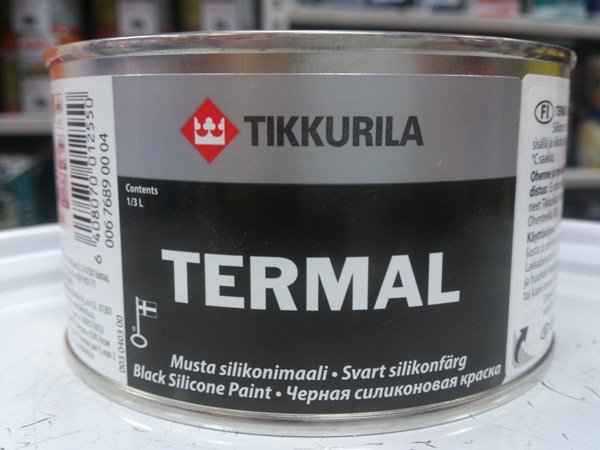
Photo 2. A can of black heat-resistant paint. Manufacturer: Finnish company Tikkurila.
- "Certa". Various types of heat-resistant anti-corrosion paints and varnishes are produced. They withstand heat up to 650 degrees.
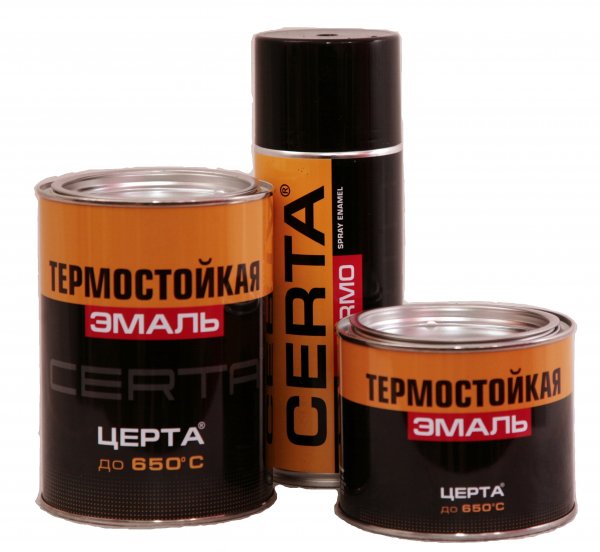
Photo 3. Three heat-resistant enamel jars that can withstand heating up to 650 degrees. Manufacturer "Certa".
- "New Tone" Available in cans, suitable for treating metal parts of the stove (doors, chimney). Withstands heat well up to 800 degrees.
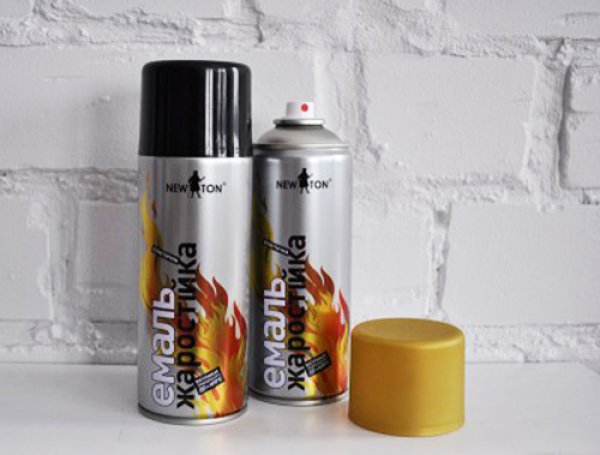
Photo 4. Two cans of heat-resistant paint in black and gold. Manufacturer "New-Tone".
The paint layer must be applied to a surface prepared in strict accordance with the manufacturer's instructions, usually clean from dirt and dust, degrease. The oven is also recommended. preheat (This will help dry the surface of the walls before painting).
Poor quality materials are dangerous
When using finishing materials that do not meet all the requirements, damage to the walls of the stove, fires, and carbon monoxide penetration into the room are possible. Therefore, it is important to ensure that the materials do not have signs of low quality products: non-uniform consistency, uneven application of the composition, cracking and separation of the layer from the surface under the influence of high temperatures.
Useful video
Watch a video that explains the process of finishing a fireplace with decorative plaster.








Comments